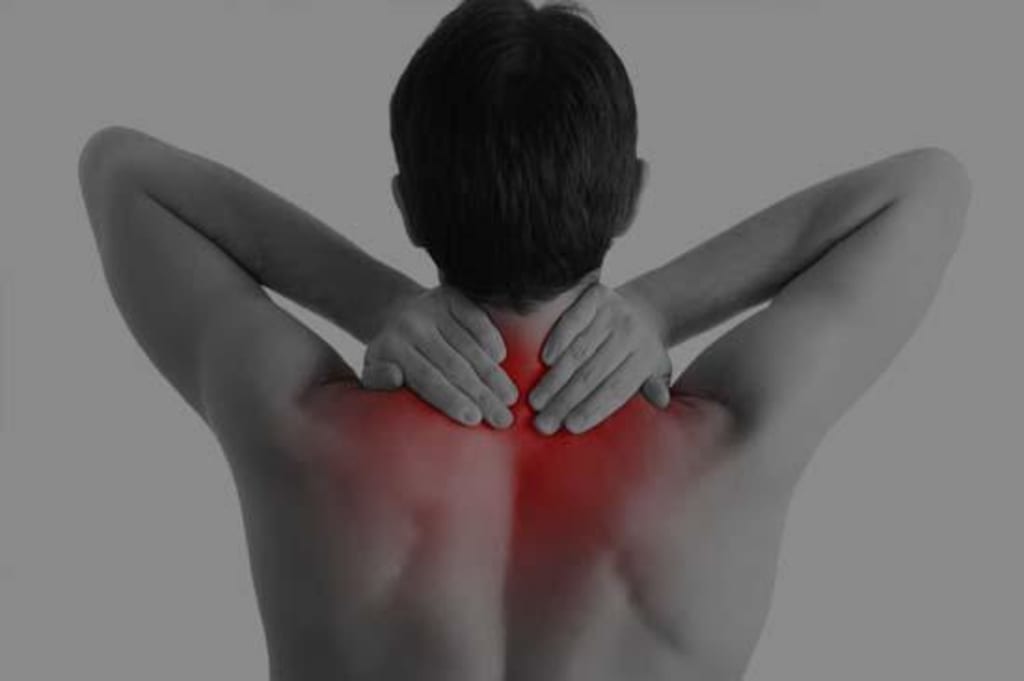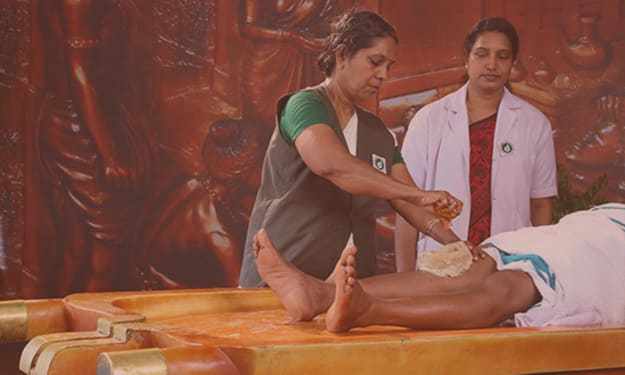Neck Pain Causes And Symptoms
How To Cure Neck Pain With Ayurveda

Introduction
Neck pain is a very common condition that can affect people of all ages. Neck pain can range from mild to severe, and can be caused by a variety of factors such as injury, posture, stress, and medical conditions. If you have ever experienced neck pain, you will know how it can be very painful and affect your ability to carry on with your daily activities as normal. Neck pain affects both men and women, young and old, and can occur at any time of the day.
Neck stiffness can significantly reduce the quality of life and make everyday activities uncomfortable or even impossible. While there are some symptoms of neck pain that may require medical intervention, many times all you need is relief from the pain to get back on track with life. Thankfully, Ayurveda has some natural remedies that are perfect if you are suffering from neck pain of any kind! Ayurveda offers a range of natural remedies that can be used to help treat neck pain. Ayurvedic treatments focus on treating the root cause of neck pain, rather than simply masking the symptoms. This can result in long-term relief from neck pain and improved overall health. In this article, we’ll discuss the causes and symptoms of neck pain, as well as some of the best Ayurvedic treatments for it.
What Are the Causes of Neck Pain?
Neck pain can be caused by a variety of factors, including poor posture, muscle strain, injuries, and stress. It is important to understand the real cause of neck pain in order to properly diagnose and treat it.
- Poor posture is one of the most common causes of neck pain. When you slouch or hunch your shoulders, the muscles in your neck become strained, which can cause pain. Sitting for long periods of time in the same position can also contribute to neck pain. Other postural problems such as sitting with your head leaning forward can also lead to neck pain.
Another frequent cause of neck pain is muscle strain. This can occur from overuse of certain muscles, incorrect posture, or from an injury such as a car accident or sports-related incident. Neck stiffness can also occur when the muscles become tense due to stress or anxiety.
Injuries to the neck are another possible cause of neck pain. These can include whiplash, herniated discs, and fractures. If you have sustained an injury to the neck, it is important to see a doctor to determine the severity and get proper treatment.
Finally, stress and anxiety can also cause neck pain. Stress can cause the muscles in the neck to become tense and lead to pain. Additionally, people who are constantly worrying or experience frequent tension headaches may experience chronic neck pain.
If you are experiencing neck pain, it is important to identify the underlying cause so that you can receive appropriate treatment. Your doctor can help you determine what is causing your pain and suggest ways to relieve it, such as stretching exercises, massage, hot or cold packs, and certain medications. In addition, some people may find relief from their neck pain through Ayurveda, an ancient Indian healing system. Ayurvedic treatments such as yoga and meditation can help reduce stress and relax muscles in the neck, which can help ease the pain.
Symptoms of Neck Pain
Neck stiffness can be caused by muscle strain, tension in the muscles or ligaments, or a pinched nerve. It can also be caused by an injury, such as whiplash, or conditions like arthritis or poor posture. Neck pain can range from mild to severe and can interfere with your daily activities.
The most common symptoms of neck pain include stiffness, tenderness, aching, burning, and decreased range of motion. Other symptoms may include a headache, tingling or numbness in the arms and hands, and difficulty swallowing or speaking. If you are experiencing any of these symptoms of neck pain, it’s important to seek medical advice. Your doctor will be able to determine the cause and recommend the best neck pain treatment for you.
Ayurveda is a traditional form of Indian medicine that has been used for thousands of years to treat a variety of ailments, including neck pain treatment. Ayurvedic treatments involve balancing the body’s three doshas (Vata, pitta, and Kapha) through diet, lifestyle changes, yoga, meditation, and herbal remedies.
One Ayurvedic remedy for neck pain is the use of herbs such as ginger, turmeric, and ashwagandha. These herbs help reduce inflammation and provide relief from pain and discomfort. A warm oil massage is also helpful in treating neck pain. This technique helps relax tense muscles and improve circulation in the area.
Additionally, regular stretching exercises can help relieve neck pain and improve the range of motion. Yoga poses such as the Cat&Cow yoga pose and Cobra pose can be particularly helpful for relieving neck tension. With proper diagnosis and treatment, neck pain can be effectively managed and relieved. While it’s important to consult your doctor if you are experiencing persistent neck pain, incorporating some of the Ayurvedic remedies discussed above may help alleviate your symptoms and improve your overall health.
How Can You Cure Neck Pain With Ayurveda?
Neck stiffness is a common problem that can affect anyone. If you’re dealing with neck pain, you may be wondering if there are any alternative treatments that can help provide relief. One such treatment is Ayurveda, an ancient holistic healing system that has been used for centuries to treat various ailments.
Ayurveda focuses on restoring balance in the body by using diet, lifestyle habits, herbs, and massage. It is said to work by addressing the root cause of the issue rather than just masking the symptoms. So let's see how can it help with neck pain
The most important thing to consider is diet and lifestyle changes. Eating nutritious whole foods that are easy to digest and avoiding unhealthy processed foods can help relieve neck pain. Eating more greens and avoiding dairy products, fried food, and sugar can help reduce inflammation and improve overall health. In addition, paying attention to your posture when sitting or standing can help reduce the strain on your neck muscles. Practising yoga or stretching exercises can also help loosen up tight muscles in the neck and shoulders.
Ayurvedic herbs and massage can also help alleviate neck pain. Some of the herbs used in Ayurveda include ginger, turmeric, ashwagandha, and Boswellia, all of which have anti-inflammatory properties. Massaging the affected area with warm oil can help increase circulation and reduce stiffness. Finally, regular practice of relaxation techniques such as mindfulness meditation or yoga Nidra can help reduce stress and anxiety, both of which are often associated with chronic neck pain. If you’re looking for a natural way to relieve neck pain, Ayurveda offers many potential solutions. From dietary and lifestyle changes to herbs and massage therapy, this ancient healing system has something for everyone. With some dedication and patience, you may find relief from your neck pain in no time.





Comments (2)
<a href="https://dheemahiayur.com/">Best Ayurveda Hospital in India</a> for Panchakarma treatment Dr.Jyothi B.A.M.S Ayurveda indeed emphasizes a holistic approach to health, considering various aspects beyond just the absence of disease. It takes into account the balance of doshas (biological energies), proper functioning of Dhatus (tissues), healthy Agni ( digestive fire) and normal Malakriya (elimination). Additionally, it acknowledges the importance of a Prasanna Atma (content soul), balanced Indriya ( sensory organs), and a tranquil Manas (mind) in achieving overall well-being. This holistic perspective is a fundamental principle of Ayurvedic medicine, which helps one to cure from the core inside. What Is Panchakarma? The word Panchakarma is derived from two words: Pancha, which means five, while Karma means procedure and is five treatments that include curative, preventive and promotive actions for various diseases. Some acharyas also use the word Pancha Shodana ( five purificatory), which means five purificatory therapy. Acharya Charaka and Vagbhata consider the following as Panchakarma’s; Vamana– Emesis Virechana– purgation therapy Niruha vasti- enema with decoction Anuvasana vasti– enema with oil Nasya– nasal instillation. While, according to Susrutha Acharya – Father of surgery in Ayurveda, since he deals with surgery, he has given an equal importance to blood along with the Tridoshas, so he has included Raktamokshana (bloodletting procedure) to eliminate the vitiated blood as one among the Panchakarma. Vamana – Emesis Treatment In this treatment, the accumulated toxins are removed by means of vomiting. The person is made to vomit by giving medicines called Vamanaushada. Vamana treatment is usually indicated in Kapha dosha imbalance diseases. Vamana is performed in two ways mainly:- Sadhyo Vamana– instant therapeutic vomiting Purvakarmayukta Vamana/ Vamana– therapeutic Vomiting. SADHYO VAMANA Here, Sadhyo Vamana is a one-day procedure in which the patient is administered with Kashayam (Decoction) or milk in order to induce vomiting and expel the doshas and toxins from the body. PURVAKARMAYUKTA VAMANA/ VAMANA Classical Vamana is a collaborative effort where a patient must go through various procedure phases. Like snehapanam, svedanam, samsarjana karma etc., So, this procedure takes around 15 to 18 days to complete. The days depend on the disease’s condition and the patient’s digestive fire. Generally, it takes around 15 to 18 days to complete the procedure. Now let’s see the phases a patient undergoes while Vamana;
<a href="https://dheemahiayur.com/">Best Ayurveda Hospital in India</a> for Panchakarma treatment Dr.Jyothi B.A.M.S Ayurveda indeed emphasizes a holistic approach to health, considering various aspects beyond just the absence of disease. It takes into account the balance of doshas (biological energies), proper functioning of Dhatus (tissues), healthy Agni ( digestive fire) and normal Malakriya (elimination). Additionally, it acknowledges the importance of a Prasanna Atma (content soul), balanced Indriya ( sensory organs), and a tranquil Manas (mind) in achieving overall well-being. This holistic perspective is a fundamental principle of Ayurvedic medicine, which helps one to cure from the core inside. What Is Panchakarma? The word Panchakarma is derived from two words: Pancha, which means five, while Karma means procedure and is five treatments that include curative, preventive and promotive actions for various diseases. Some acharyas also use the word Pancha Shodana ( five purificatory), which means five purificatory therapy. Acharya Charaka and Vagbhata consider the following as Panchakarma’s; Vamana– Emesis Virechana– purgation therapy Niruha vasti- enema with decoction Anuvasana vasti– enema with oil Nasya– nasal instillation. While, according to Susrutha Acharya – Father of surgery in Ayurveda, since he deals with surgery, he has given an equal importance to blood along with the Tridoshas, so he has included Raktamokshana (bloodletting procedure) to eliminate the vitiated blood as one among the Panchakarma. Vamana – Emesis Treatment In this treatment, the accumulated toxins are removed by means of vomiting. The person is made to vomit by giving medicines called Vamanaushada. Vamana treatment is usually indicated in Kapha dosha imbalance diseases. Vamana is performed in two ways mainly:- Sadhyo Vamana– instant therapeutic vomiting Purvakarmayukta Vamana/ Vamana– therapeutic Vomiting. SADHYO VAMANA Here, Sadhyo Vamana is a one-day procedure in which the patient is administered with Kashayam (Decoction) or milk in order to induce vomiting and expel the doshas and toxins from the body. PURVAKARMAYUKTA VAMANA/ VAMANA Classical Vamana is a collaborative effort where a patient must go through various procedure phases. Like snehapanam, svedanam, samsarjana karma etc., So, this procedure takes around 15 to 18 days to complete. The days depend on the disease’s condition and the patient’s digestive fire. Generally, it takes around 15 to 18 days to complete the procedure. Now let’s see the phases a patient undergoes while Vamana;